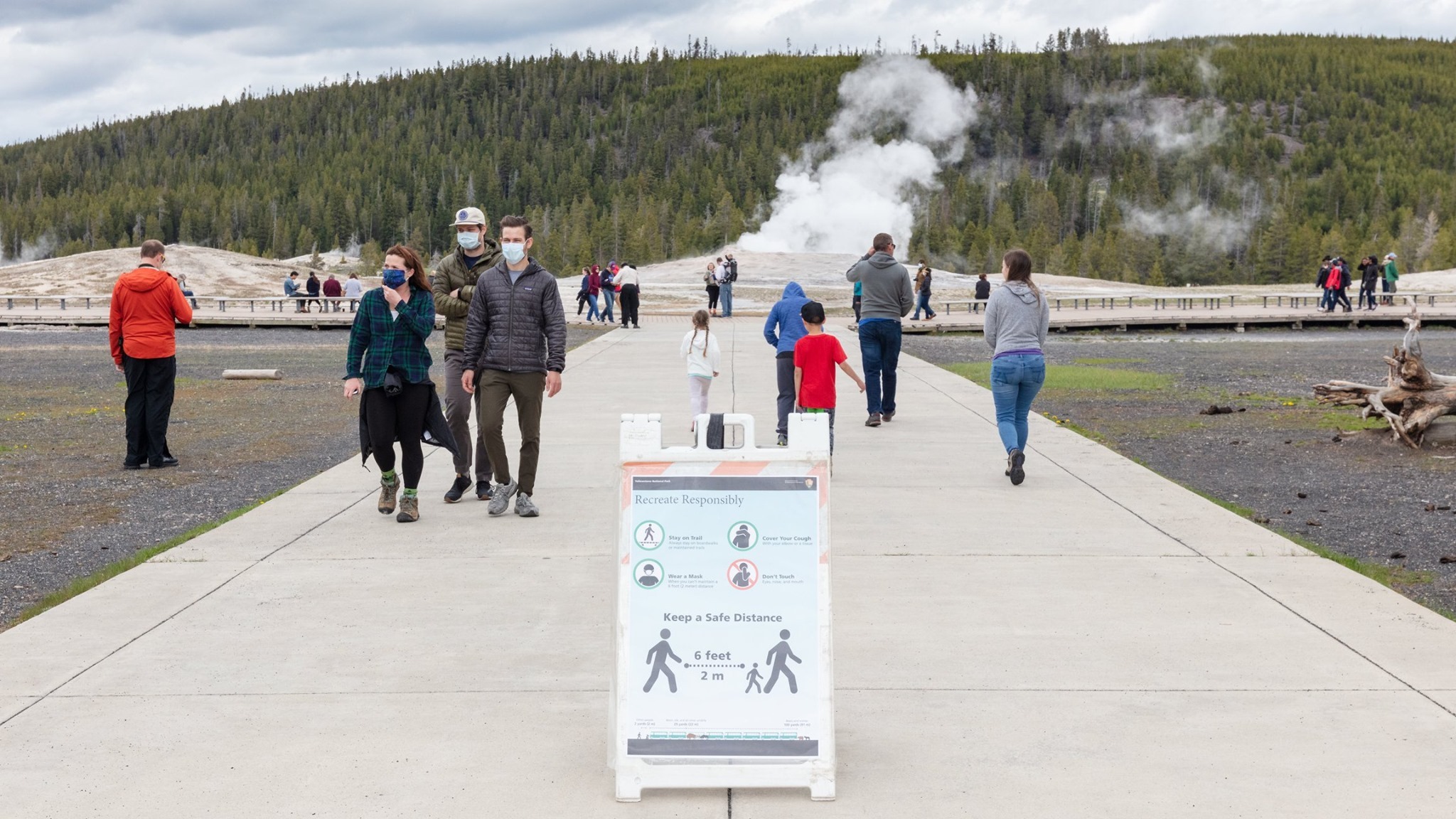News Release

NPS photo
News Release Date: February 25, 2021
Contact: NewsMedia@nps.gov
WASHINGTON – Outdoor experiences provided refuge from the pandemic for 237 million visitors to America’s national parks in 2020. The number represents a 28% decrease from the previous year due largely to temporary park closures and restrictions implemented in response to the coronavirus pandemic.
Although overall visitation dropped, a number of parks experienced record crowds and welcomed new visitors. Trails, overlooks and open spaces provided safe ways for visitors to recreate responsibly, get some fresh air and stay active.
“This past year has reminded us how important national parks and public lands are to overall wellbeing,” said NPS Deputy Director Shawn Benge. “Throughout the country, national parks provided close-to-home opportunities for people to spend much needed time outdoors for their physical and psychological health.”
The coronavirus pandemic has affected nearly every National Park Service operation, and parks continue to work with public health officials to navigate changing conditions. A maximum 66 of the 423 parks of the National Park System were fully closed for two months or more. The majority of parks – particularly those with outdoor spaces – remained accessible to the public. Just a handful of historic and cultural parks, primarily historic homes with limited indoor space, remain closed.
To protect the health of those who live, work and visit America’s national parks, face masks are required in all NPS buildings and facilities. Masks are also required on federally managed lands when physical distancing cannot be maintained, including narrow or busy trails, overlooks, and parking lots. Additional public health measures remain in effect, and visitors should check with individual parks for details on operations before visiting.
Additional information from the 2020 visitation report includes:
-
Recreation visitor hours dipped from 1.4 billion in 2019 to 1.05 billion in 2020, a 26% decrease.
-
15 parks set a new recreation visitation record in 2020.
-
Five parks broke a visitation record they set in 2019.
-
Blue Ridge Parkway claimed the title of most-visited site in the National Park System.
-
Great Smoky Mountains National Park maintained its long-running position as the most visited National Park in 2020 – a position it has held since 1944. Grand Canyon National Park dropped from the second-most visited national park – a position it held for 30 years – to the sixth most-visited. Yellowstone National Park moved from the sixth most-visited national park in 2019 to second most-visited – a position it has not held since 1947.
-
Four parks began reporting official visitor statistics for the first time: Boston Harbor Islands National Recreation Area, Dwight D. Eisenhower Memorial, Katahdin Woods and Waters National Monument and Valles Caldera National Preserve.
For an in-depth look at 2020 visitation statistics, please visit the National Park Service Social Science website. For national summaries and individual park figures, please visit the National Park Service Visitor Use Statistics website.
2020 by the numbers
-
237,064,332 recreation visits.
-
1,054,952,540 recreation visitor hours.
-
8,039,768 overnight stays (recreation + non-recreation).
-
Three parks had more than 10 million recreation visits – Blue Ridge Parkway, Golden Gate National Recreation Area, and Great Smoky Mountains National Park.
-
Seven parks had more than five million recreation visits – down from 11 parks in 2019.
-
60 parks had more than one million recreation visits (15% of reporting parks) - down from 80 parks in 2019.
-
19 national parks had more than one million recreation visits (30% of National Parks).
-
25% of total recreation visits occurred in the top six most-visited parks (1.5% of all parks in the National Park System.
-
50% of total recreation visits occurred in the top 23 most-visited parks (6% of all parks in the National Park System).
Top Ten Most Visited National Park Service Sites
-
Blue Ridge Parkway 14.1 million.
-
Golden Gate National Recreation Area 12.4 million.
-
Great Smoky Mountains National Park 12.1 million.
-
Gateway National Recreation Area 8.4 million.
-
Lake Mead National Recreation Area 8 million.
-
George Washington Memorial Parkway 6.2 million.
-
Natchez Trace Parkway 6.1 million.
-
Chesapeake and Ohio Canal National Historical Park 4.9 million.
-
Cape Cod National Seashore 4.1 million.
-
Delaware Water Gap National Recreation Area 4.1 million.
Top Ten Most Visited National Parks
-
Great Smoky Mountains National Park 12.1 million.
-
Yellowstone National Park 3.8 million.
-
Zion National Park 3.6 million.
-
Rocky Mountain National Park 3.3 million.
-
Grand Teton National Park 3.3 million.
-
Grand Canyon National Park 2.9 million.
-
Cuyahoga Valley National Park 2.8 million.
-
Acadia National Park 2.7 million.
-
Olympic National Park 2.5 million.
-
Joshua Tree National Park 2.4 million.
About the National Park Service. More than 20,000 National Park Service employees care for America's 423 national parks and work with communities across the nation to help preserve local history and create close-to-home recreational opportunities. Learn more at www.nps.gov, and on Facebook, Instagram, Twitter, and YouTube.
Last updated: February 25, 2021
